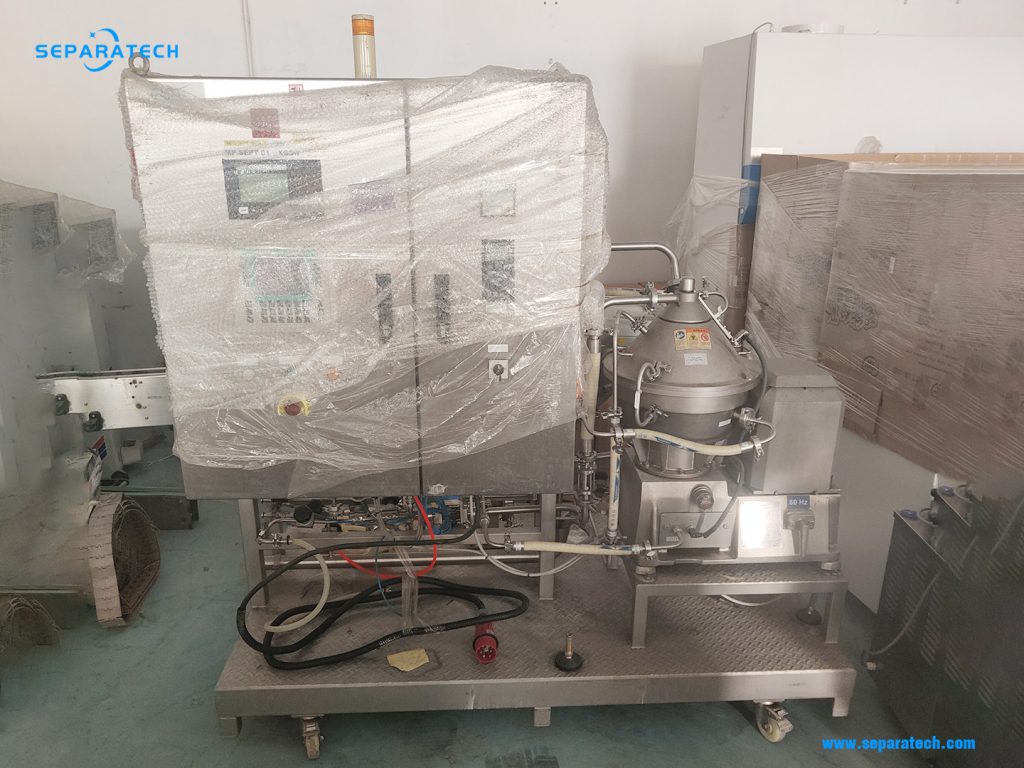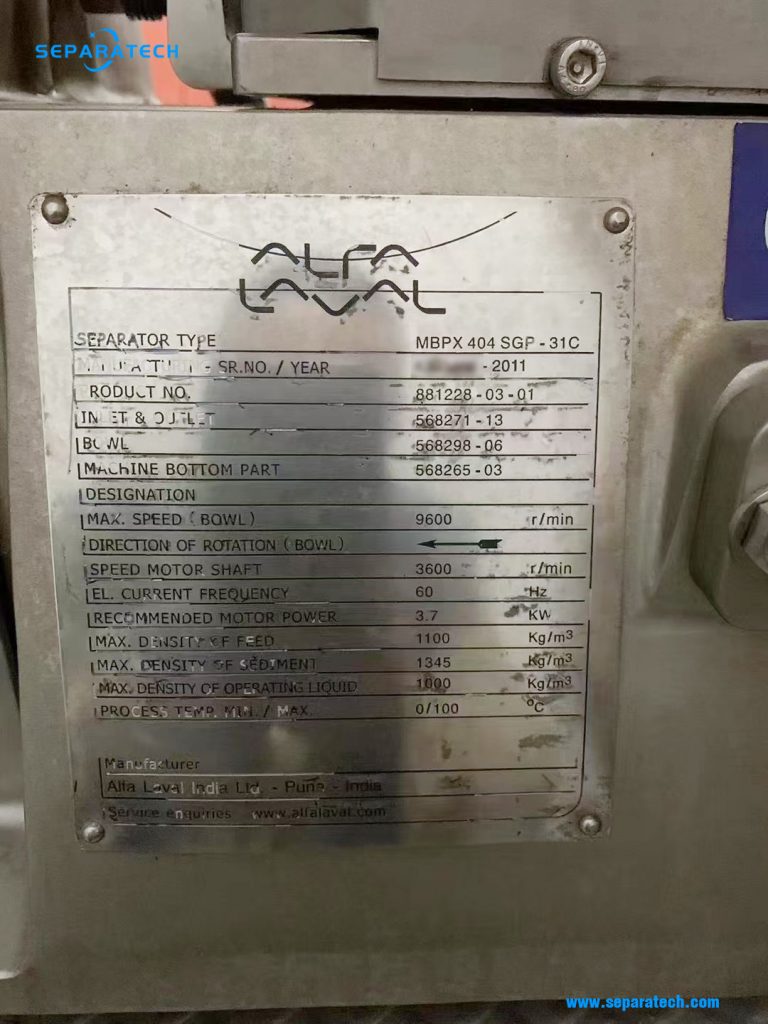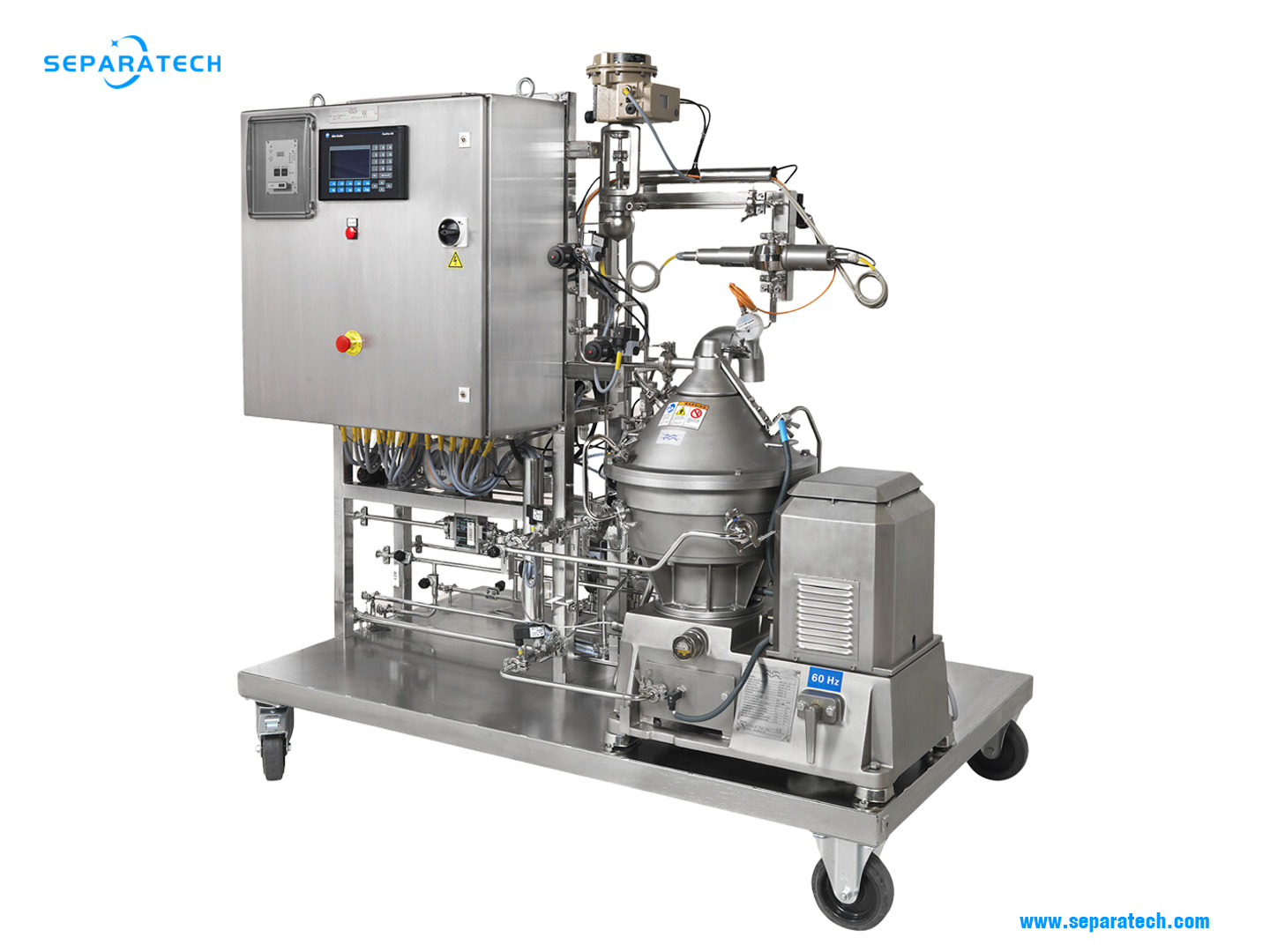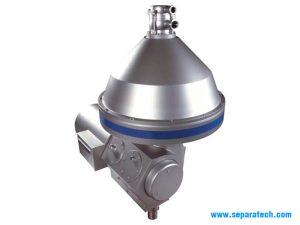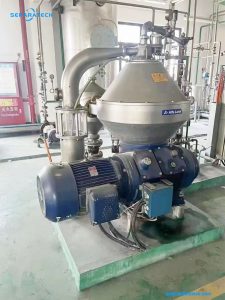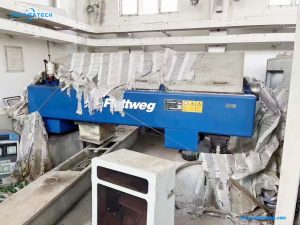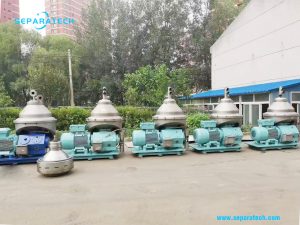Applications
The MBPX404SGP-31C Disc Centrifuge is a small-sized unit in the range of centrifuges specially built for microbiological applications. The separation duties met with often require very high bowl speeds for an optimal performance in separation of solid particles with very small diameters.
The MBPX404 separation system is based on the solids ejecting MBPX404SGP-31C Disc Centrifuge in clarifier execution with fixed partial discharge mechanism for timer triggered discharge of solids. It is used to remove suspended solids with particle sizes of approximately 0.5 to 500 μm from a liquid having lower specific gravity than the solids. The solids content is normally in the range of 0.1-10% by volume. The main applications are bacteria, rDNA products, enzymes, cell cultures and vaccines.
The MBPX404SGP-31C Disc Centrifuge is best suited for small scale fermenters ranging from 50 to 500 liters, and where in situ steam sterilization is not mandatory. Thanks to its compact size and mobility, the module is ideally suited for development applications. The MBPX404SGP-31C Disc Centrifuge offers reliable scale-up possibility for production facility.
Technical specifications
Designation: MBPX404SGP-31C Disc Centrifuge
Manufacturer: Alfa Laval
Manufacturing year: 2011
Max. flowrate: 50 – 1,000 l/h
Bowl speed: 9600 rpm
Motor: 3.7 Kw
EL. Current frequency: 60Hz
Process temperature: 0 – 100 °C
Working principle
Separation in the MBPX404SGP-31C Disc Centrifuge takes place inside a rotating bowl. The untreated feed is introduced to the bowl from the top via a stationary inlet pipe and is accelerated in the distributor before entering the disc stack. The separation of the sediment takes place in between the discs. The light phase moves towards the center and is discharged by a stationary paring disc. The heavier solids phase is collected at the bowl periphery from where it is discharged intermittently in the sediment space and decelerated in the cyclone of MBPX404SGP-31C Disc Centrifuge. The solids discharge is achieved by a hydraulic system below the separation space in the bowl, which at certain intervals forces the sliding bowl bottom to drop down, thus opening the solids ports at the bowl periphery. The bowl is mounted on a vertical spindle driven by a vertically mounted motor, via a belt drive.
